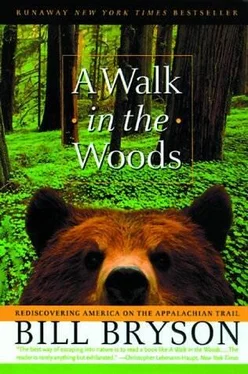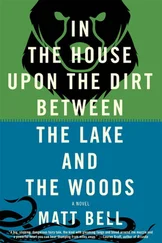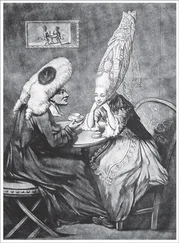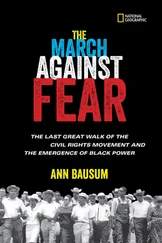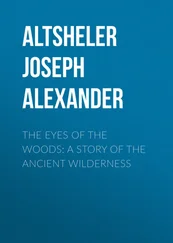Bill Bryson - A Walk In The Woods
Здесь есть возможность читать онлайн «Bill Bryson - A Walk In The Woods» весь текст электронной книги совершенно бесплатно (целиком полную версию без сокращений). В некоторых случаях можно слушать аудио, скачать через торрент в формате fb2 и присутствует краткое содержание. Жанр: Современная проза, на английском языке. Описание произведения, (предисловие) а так же отзывы посетителей доступны на портале библиотеки ЛибКат.
- Название:A Walk In The Woods
- Автор:
- Жанр:
- Год:неизвестен
- ISBN:нет данных
- Рейтинг книги:4 / 5. Голосов: 1
-
Избранное:Добавить в избранное
- Отзывы:
-
Ваша оценка:
- 80
- 1
- 2
- 3
- 4
- 5
A Walk In The Woods: краткое содержание, описание и аннотация
Предлагаем к чтению аннотацию, описание, краткое содержание или предисловие (зависит от того, что написал сам автор книги «A Walk In The Woods»). Если вы не нашли необходимую информацию о книге — напишите в комментариях, мы постараемся отыскать её.
A Walk In The Woods — читать онлайн бесплатно полную книгу (весь текст) целиком
Ниже представлен текст книги, разбитый по страницам. Система сохранения места последней прочитанной страницы, позволяет с удобством читать онлайн бесплатно книгу «A Walk In The Woods», без необходимости каждый раз заново искать на чём Вы остановились. Поставьте закладку, и сможете в любой момент перейти на страницу, на которой закончили чтение.
Интервал:
Закладка:
“Virginia?” he said, as if I had asked him if there was anywhere local we could get a dose of syphilis. He was a little guy, short but built like iron, and at least seventy years old, but real bright, smarter than me and Katz put together, and he grasped the notion of the enterprise before I had halfway explained it.
“Well, then you want to go to Knoxville and rent a car and drive up to Roanoke. That’s what you want to do.”
I nodded. “How do we get to Knoxville?”
“How’s a cab sound to you?” he barked at me as if I were three-quarters stupid. I think he might have been a bit hard of hearing, or else he just liked shouting at people. “Probably cost you about fifty bucks,” he said speculatively.
Katz and I looked at each other. “Yeah, OK,” I said, and we got in.
And so, just like that, we found ourselves heading for Roanoke and the sweet green hills of old Virginny.
Chapter 9
In the summer of 1948, Earl V. Shaffer, a young man just out of the army, became the first person to hike the Appalachian Trail from end to end in a single summer. With no tent, and often navigating with nothing better than road maps, he walked for 123 days, from April to August, averaging seventeen miles a day. Coincidentally, while he was hiking, the Appalachian Trailway News, the journal of the Appalachian Trail Conference, ran a long article by Myron Avery and the magazine’s editor, Jean Stephenson, explaining why an end-to-end hike was probably not possible.
The trail Shaffer found was nothing like the groomed and orderly corridor that exists today. Though it was only eleven years since the trail’s completion, by 1948 it was already subsiding into oblivion. Shaffer found that large parts of it were overgrown or erased by wholesale logging. Shelters were few, blazes often nonexistent. He spent long periods bushwhacking over tangled mountains or following the wrong path when the trail forked. Occasionally he stepped onto a highway to find that he was miles from where he ought to be. Often he discovered that local people were not aware of the trail’s existence or, if they knew of it, were amazed to be told that it ran all the way from Georgia to Maine. Frequently he was greeted with suspicion.
On the other hand, even the dustiest little hamlets nearly always had a store or café, unlike now, and generally when Shaffer left the trail he could count on flagging down a country bus for a lift to the nearest town. Although he saw almost no other hikers in the four months, there was other, real life along the trail. He often passed small farms and cabins or found graziers tending herds on sunny balds. All those are long gone now. Today the AT is a wilderness by design-actually, by fiat, since many of the properties Shaffer passed were later compulsorily purchased and quietly returned to woodland. There were twice as many songbirds in the eastern United States in 1948 as now. Except for the chestnuts, the forest trees were healthy. Dogwood, elms, hemlocks, balsam firs, and red spruces still thrived. Above all, he had 2,000 miles of trail almost entirely to himself.
When Shaffer completed the walk in early August, four months to the day after setting off, and reported his achievement to conference headquarters, no one there actually believed him. He had to show officials his photographs and trail journal and undergo a “charming but thorough cross examination,” as he put it in his later account of the journey, Walking with Spring, before his story was finally accepted.
When news of Shaffer’s hike leaked out, it attracted a good deal of attention-newspapers came to interview him, the National Geographic ran a long article-and the AT underwent a modest revival. But hiking has always been a marginal pursuit in America, and within a few years the AT was once more largely forgotten except among a few diehards and eccentrics. In the early 1960s a plan was put forward to extend the Blue Ridge Parkway, a scenic highway, south from the Smokies by building over the southern portion of the AT. That plan failed (on grounds of cost, not because of any particular outcry), but elsewhere the trail was nibbled away or reduced to a rutted, muddy track through zones of commerce. In 1958, as we’ve seen, twenty miles were lopped off the southern end from Mount Oglethorpe to Springer Mountain. By the mid-1960s it looked to any prudent observer as if the AT would survive only as scattered fragments-in the Smokies and Shenandoah National Park, from Vermont across to Maine, as forlorn relic strands in the odd state park, but otherwise buried under shopping malls and housing developments. Much of the trail crossed private lands, and new owners often revoked informal rights-of-way agreements, forcing confused and hasty relocations onto busy highways or other public roads-hardly the tranquil wildnerness experience envisioned by Benton MacKaye. Once again, the AT looked doomed.
Then, in a timely piece of fortuitousness, America got a secretary of the interior, Stewart Udall, who actually liked hiking. Under his direction, a National Trails System Act was passed in 1968. The law was ambitious and far-reaching-and largely never realized. It envisioned 25,000 miles of new hiking trails across America, most of which were never built. However, it did produce the Pacific Crest Trail and secured the future of the AT by making it a de facto national park. It also provided funds-$170 million since 1978-for the purchase of private lands to provide a wilderness buffer alongside it. Now nearly all the trail passes through protected wilderness. Just twenty-one miles of it-less than 1 percent of the total-are on public roads, mostly on bridges and where it passes through towns.
In the half century since Shaffer’s hike, about 4,000 others have repeated the feat. There are two kinds of end-to-end hikers-those who do it in a single season, known as “thru-hikers,” and those who do it in chunks, known as “section hikers.” The record for the longest section hike is forty-six years. The Appalachian Trail Conference doesn’t recognize speed records, on the grounds that that isn’t in the spirit of the enterprise, but that doesn’t stop people from trying. In the 1980s a man named Ward Leonard, carrying a full pack and with no support crew, hiked the trail in sixty days-an incredible feat when you consider that it would take you about five days to drive an equivalent distance. In May 1991, an “ultra-runner” named David Horton and an endurance hiker named Scott Grierson set off within two days of each other. Horton had a network of support crews waiting at road crossings and other strategic points and so needed to carry nothing but a bottle of water. Each evening he was taken by car to a motel or private home. He averaged 38.3 miles a day, with ten or eleven hours of running. Grierson, meanwhile, merely walked, but he did so for as much as eighteen hours a day. Horton finally overtook Grierson in New Hampshire on the thirty-ninth day, reaching his goal in fifty-two days, nine hours. Grierson came in a couple of days later.
All kinds of people have completed thru-hikes. One man hiked it in his eighties. Another did it on crutches. A blind man named Bill Irwin hiked the trail with a seeing-eye dog, falling down an estimated 5,000 times in the process. Probably the most famous, certainly the most written about, of all thru-hikers was Emma “Grandma” Gatewood, who successfully hiked the trail twice in her late sixties despite being eccentric, poorly equipped, and a danger to herself. (She was forever getting lost.) My own favorite, however, is a guy named Woodrow Murphy from Pepperell, Massachusetts, who did a thru-hike in the summer of 1995. I would have liked him anyway, just for being called Woodrow, but I especially admired him when I read that he weighed 350 pounds and was doing the hike to lose weight. In his first week on the trail, he managed just five miles a day, but he persevered, and by August, when he reached his home state, he was up to a dozen miles a day. He had lost fifty-three pounds (a trifle, all things considered) and at last report was considering doing it all over again the following year.
Читать дальшеИнтервал:
Закладка:
Похожие книги на «A Walk In The Woods»
Представляем Вашему вниманию похожие книги на «A Walk In The Woods» списком для выбора. Мы отобрали схожую по названию и смыслу литературу в надежде предоставить читателям больше вариантов отыскать новые, интересные, ещё непрочитанные произведения.
Обсуждение, отзывы о книге «A Walk In The Woods» и просто собственные мнения читателей. Оставьте ваши комментарии, напишите, что Вы думаете о произведении, его смысле или главных героях. Укажите что конкретно понравилось, а что нет, и почему Вы так считаете.
